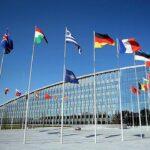BY PROFESSOR ILTER TURAN
The crisis in Ukraine has monopolized the news during the recent weeks. If a man from space read the newspaper headlines, he might easily conclude that the world has a single problem. If an agreement could be reached, then the world would indeed become a happy place, that man would think. Such a view hardly corresponds to reality, however. Rather, the prevalence of news about Ukraine-Russia has led us to overlook many pressing problems that are already producing conflicts, like the Islamic State, or that are likely to produce conflicts in the foreseeable future. I am sure that we will be writing more about Ukraine, Russia and the West soon again, but allow me to take a break this week and discuss the water problem that Turkey and its southern neighbors face. This carries the potential for severe conflict if not addressed in a cooperative manner.
The Middle East is not blessed with large quantities of water. Population growth, urbanization and economic development are generating shortages that are already giving way to highly competitive relationships that may lead to severe conflicts. Currently on the Nile, for example, Egypt and Sudan are barely managing their “aquatic” rivalry with Ethiopia. Ethiopia has just completed the Grand Ethiopian Renaissance Dam (GERD) and beginning to hold water to fill it. The competition for water in the Israel-Jordan-Syria triangle needs no elaboration. Some observers have argued that a major reason, in addition to security, as to why Israel has annexed the Golan Heights is to increase its water supply.
Not receiving as much attention as these two contested areas is the Tigris-Euphrates Basin that is shared by Turkey, Syria and Iraq. The civil war in Syria and the highly unstable politics of Iraq are of such immediate interest that pending problems are overlooked, except in occasional reports that study the potential for conflict in the area owing to the insufficiency of water. The trend is clear: water demand in the three riparians has been going up for many reasons, primary among them population growth. To cite an example, in Turkey, the amount of water available per person was 1430 cu. mt. in 2006, it is expected to go down to the water stress level of 1000 cu.mt. in 2030 with parallel declines in downstream countries.
The Tigris and the Euphrates both originate in Turkey. 31.5 billion cu. mt. or nearly the entire annual flow of the Euphrates comes from Turkey. The modest increase in Syria is mainly accounted for by small rivers that also originate in Turkey. Turkey has agreed to provide Syria with a monthly average of 500 cu. mt. per second. Syria, in turn, has agreements with Iraq that obliges it to release 52 per cent of the incoming flow to Iraq. Apart from a modest amount water in its Western regions, Syria is dependent exclusively on the Euphrates for its water needs for human use and hydro-electric power generation. The Tigris, also originating in Turkey, crosses into Iraq after briefly forming the border with Syria, but unlike the Euphrates, it is also fed by rivers that originate in Iran. Before reaching the sea, it meets the Euphrates South of Baghdad, to form the Shatt-el-Arab, which runs for approximately 200 km. The total annual flow of the Tigris is 48.7 billion cu. mt. but only 25.2 billion cu. mt. comes from Turkey, the rest (23.5 billion cu. mt.) from Iran and Iraq itself.
Not surprisingly, three riparians of the two rivers are engaged in a perennial debate as regards who should get how much of the water. The downstream riparians, who have traditionally used the waters of these rivers for irrigation, put forth users’ rights arguments. They also claim that the water, no matter where it comes from, belongs to all riparians and it should be divided using mathematical formulations. Turkey is adamant that it is entitled to the use of the water that originates in its own territory but that it is duty-bound to not deprive its neighbors of water and that it is willing to allocate them sufficient quantities. According to Turkey, the two rivers should be treated as constituting a single basin while the Iraqis and Syrian are determined that they should be treated as separate and distinct. As these debates rage, other conflicts in the region have moved attention away from the “hydraulic,” but as time passes, the problem of water stress will become more acute and may become less easily solved by technical and diplomatic means.
Unfortunately, until stability in Syria is restored, there may be no authority there to tend to water questions. Iraq’s current capabilities are also limited. If such constraints were not present, there are many actions that national governments might adopt in the short to medium term, such as more effective pollution control and the employment of water saving technologies. However, trilateral cooperation would clearly be preferable. The long term problem does need immediate attention to avert severe future conflict but conditions are unfavorable and the riparians seem unprepared to take up the challenge.










